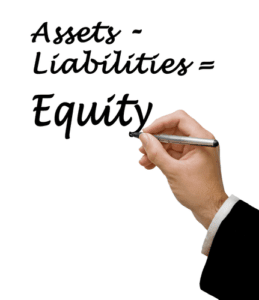
The entities in these joint arrangements share the output from the site, and each party is free to sell or use its portion of the output as desired. Although the contractual agreement dictates the ownership split of the field’s total output over the life of the project, the output extracted by each partner may not align perfectly with his or her ownership percentage. The differences between an entity’s ownership percentage and its share of output are called production imbalances. These imbalances are tracked over time so that the parties involved can settle the differences. When prices plummet, the value of reserves may decrease, affecting the company’s assets and financial health.
Oil and gas accounting, financial reporting, and tax update

Within the O&G industry, some examples of these services include gathering, processing, and compression services provided by midstream companies and drilling, mobilization, and standby services provided by oilfield services companies. The remainder of this section focuses specifically on drilling contracts, but the principles remain true for other types of O&G contracts involving multiple services. If the transfer of control occurs after shipment, any shipping costs paid by the seller are not treated as a separate promise to the customer.
- Depreciation and amortization, on the other hand, apply to tangible and intangible assets, respectively.
- Gran Tierra has disclosed estimated proved, probable and possible reserves in its filings with the SEC.
- Each partner’s share of revenue must be accurately calculated and reported, taking into account the specific terms of the joint venture agreement.
- Companies must foresee and adapt to potential stranded assets, restructuring investments, and preparing for an energy market where oil might not be the primary player.
- Using the sales method, companies recognize revenue on all sales to third party customers, regardless of their ownership percentage.
- At EAG Inc., we think of “best practices” as the set of techniques and procedures that allow you to produce the most efficient results with the least number of resources.
Industry hot topics
- When prices plummet, the value of reserves may decrease, affecting the company’s assets and financial health.
- These requirements vary widely from state to state, and it’s important to have a system that can support these requirements and make compliance a breeze.
- Under CIF contracts, the seller assumes the risk of loss during transport by paying for the cost, insurance, and freight related to the shipment.
- Impairment occurs when the carrying amount of an asset exceeds its recoverable amount, necessitating a write-down to reflect the diminished value.
We offer a host of helpful back-office administrative services designed to help you drive your business forward. You must possess a deep breadth of knowledge about contemporary financial techniques and how they apply to the energy industry. This section summarizes recently enacted federal legislation affecting the financial reporting of income taxes and new and proposed FASB guidance on accounting for income taxes. The productivity of the Ecuador wells is a testament to the geology in the Oriente and Putumayo Basins, and underpins a key pillar of growth going forward. While many tools cater to the sector, some renowned ones include P2 Energy Solutions, Quorum Software, and OGsys. These platforms cater specifically to https://www.bookstime.com/ oil & gas complexities, offering comprehensive solutions.
- Unexpected breakage should be recognized as revenue when the customer’s probability of exercising their rights becomes remote.
- Deciphering income statements and cash flow can often be challenging with either method, so it is imperative to have a team in place that has the right expertise to help you charter that territory successfully.
- This annual publication provides an update on accounting, tax, and regulatory matters relevant to the oil and gas industry.
- Depletion pertains specifically to the reduction in the value of natural resources as they are extracted, while depreciation and amortization apply to tangible and intangible assets, respectively.
- Under the successful efforts methodology, you expense them, and under the full cost methodology you capitalize them and add that CapEx to the PP&E on your balance sheet.
How Does This Impact My Business?

For example, if commodity prices have dropped, the customer may negotiate a lower “blended” rate between the original contract rate and the current market price. Implementing ASC 606 requires a substantial amount of time and expertise, with specific challenges rising in each industry. Gain a deeper understanding of the key issues that oil and gas entities face as they transition to ASC 606. Simply subtract the expenses from the revenue each year and then multiply by (1 – Tax Rate) to calculate the after-tax cash flows. You want to track the beginning and ending reserves each year, the annual production volume, and the average price for each commodity; typically you use the same low/mid/high price cases that you used in the company’s operating model. Under the successful efforts methodology, you expense them, and under the full cost methodology you capitalize them and add that CapEx to the PP&E on your balance sheet.
These two governing bodies have yet to find the ideological common ground needed to establish a single accounting approach. Expenses should be recognized in the period in which they are incurred, helping to match costs with the revenue they generate. It provides guidance on the recognition criteria, measurement, and disclosure of revenue in financial statements. For contracts with extended payment terms, revenue under ASC 606 should be recognized when the entity transfers control of the good or service to the customer and there is no deferral of revenue tied to the timing of payments. Take-or-pay arrangements between O&G suppliers and customers ensure that the customer will either “take” product from the supplier or “pay” a penalty. The two parties agree on a price at which the customer will buy product and another price, usually lower, that serves as the penalty if the product is not accepted by the customer.
How Does the Oil and Gas Industry Work?
- Once the company’s costs have been fully refunded, the government and O&G company share any additional profits according to an agreed-upon profit margin.
- Exact accounting data is critical for evaluating project economics, making informed investment decisions, and planning for the future.
- Accurate JIB statements are essential for maintaining transparency and trust among joint venture partners.
- In 2018, the Accounting Standards Codification (ASC) Topic 606 became effective for all public companies.
- Factors from geopolitical unrest to technological innovations or even natural disasters can swing prices dramatically.
- Many O&G companies grant partial ownership in a mineral field to other O&G entities, in exchange for their help in developing and operating the fields.
- Under some circumstances a relationship with a customer may exist and the reimbursements should be treated as revenue.
This volatility necessitates dynamic financial strategies, risk assessments, and contingency funds. Firms are increasingly pressured to provide clear accounting statements, revealing their environmental and social impacts. Transitioning toward such transparent practices will not only appease stakeholders but can also offer a competitive edge in an industry marred by skepticism. This dynamic landscape can disrupt supply chains, inflate costs, or even jeopardize operations.
Oil and Gas Accounting Methods: Successful Efforts (SE) v. Full Cost (FC) & What You Need To Know

Financial models often incorporate scenarios to account for these variables, providing a range of potential outcomes. Revenue recognition in oil and gas accounting the oil and gas industry is a nuanced process that hinges on the specific terms of contracts and the nature of the transactions involved. The industry often deals with long-term contracts, which can complicate the timing and measurement of revenue. One of the primary frameworks guiding revenue recognition is the IFRS 15 standard, which outlines a five-step model to determine when and how much revenue should be recognized.


The risk that the assumptions on which the 2024 outlook are based prove incorrect may increase the later the period to which the outlook relates. Actual results may vary materially from the expected results expressed in forward-looking statements. Gran Tierra disclaims any intention or obligation to update or revise any forward-looking statements, whether as a result of new information, future events or otherwise, except as expressly required by applicable Certified Public Accountant law. Under some circumstances a relationship with a customer may exist and the reimbursements should be treated as revenue. For example, an entity may provide services to joint interest owners and third parties within the same mineral field.
